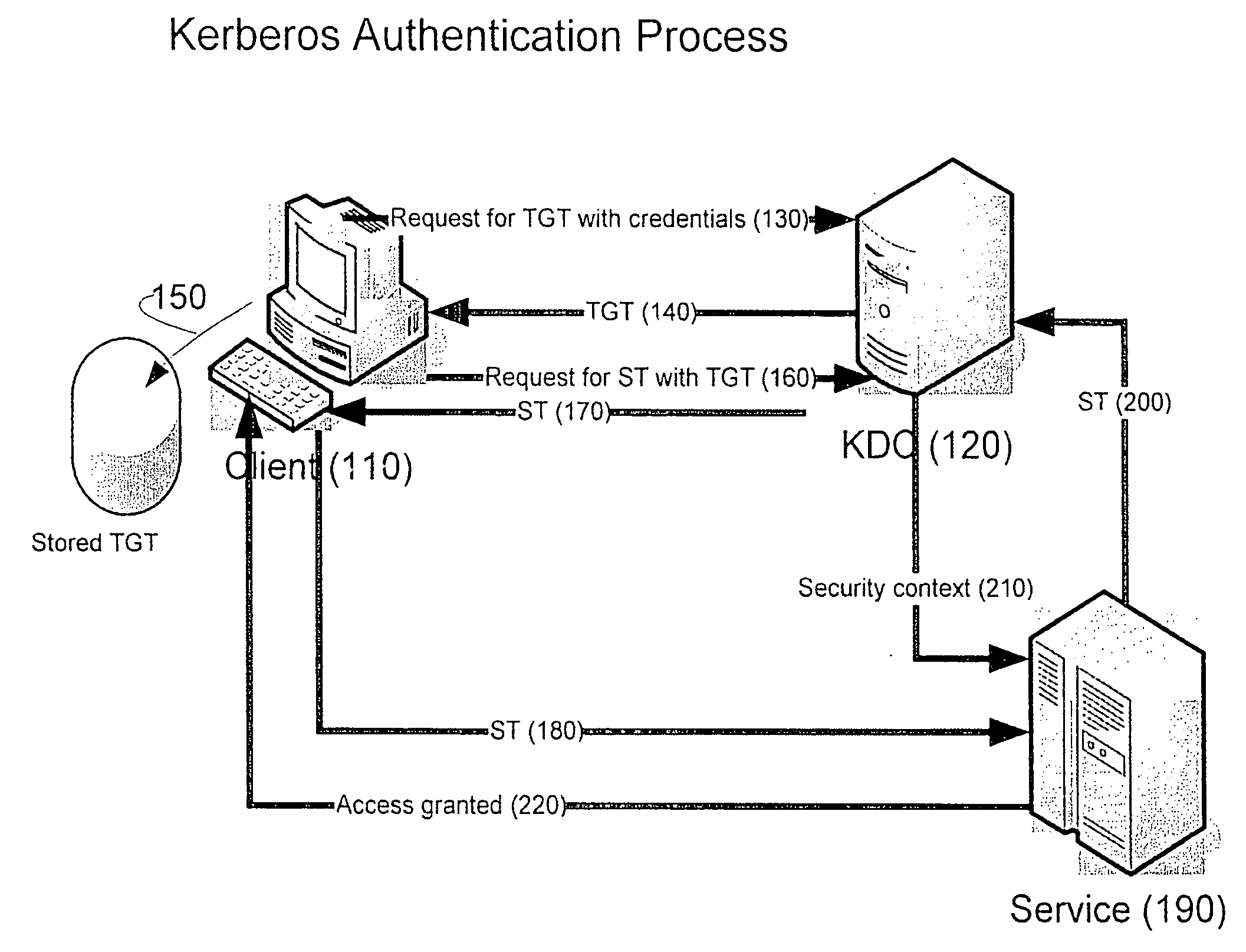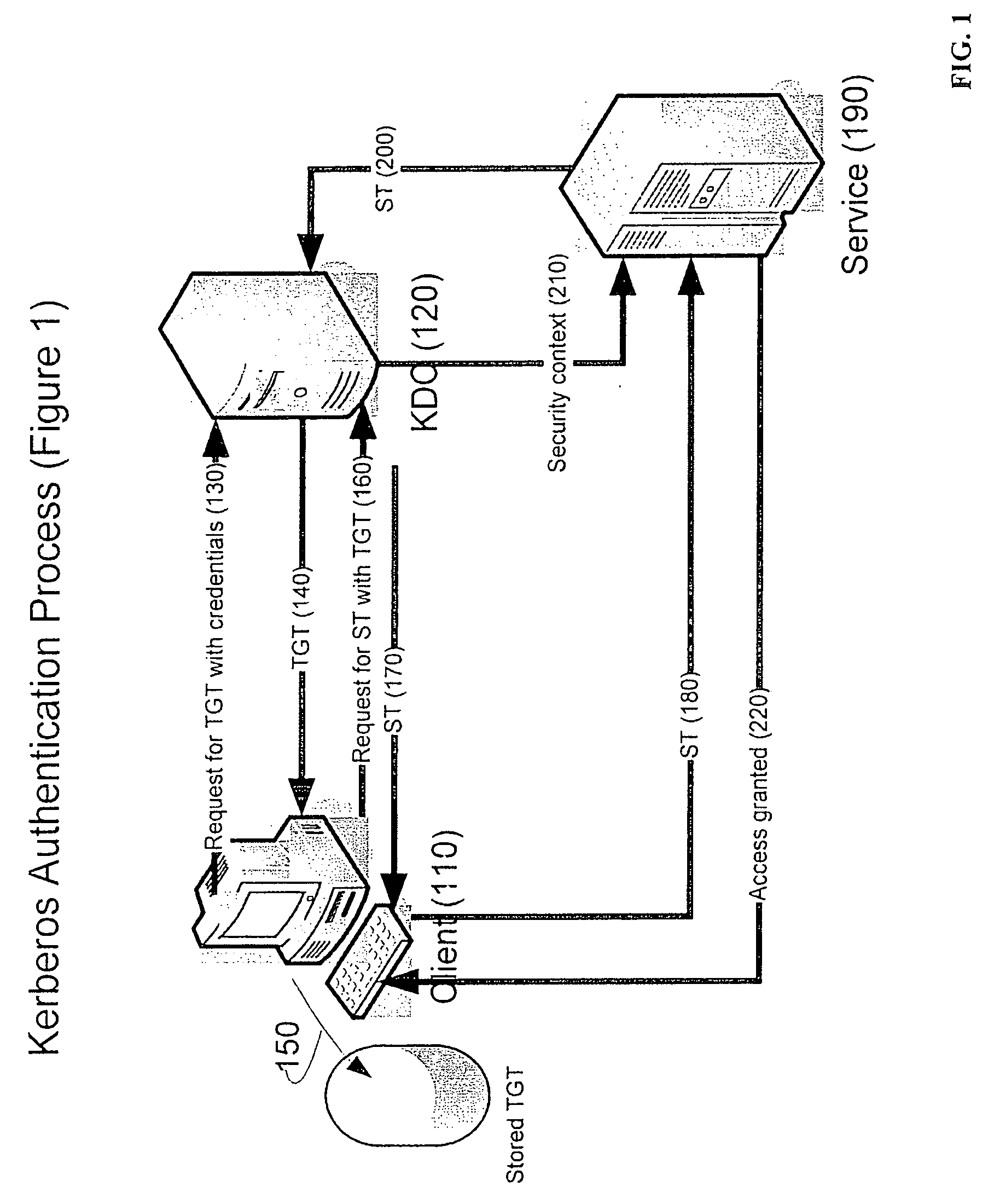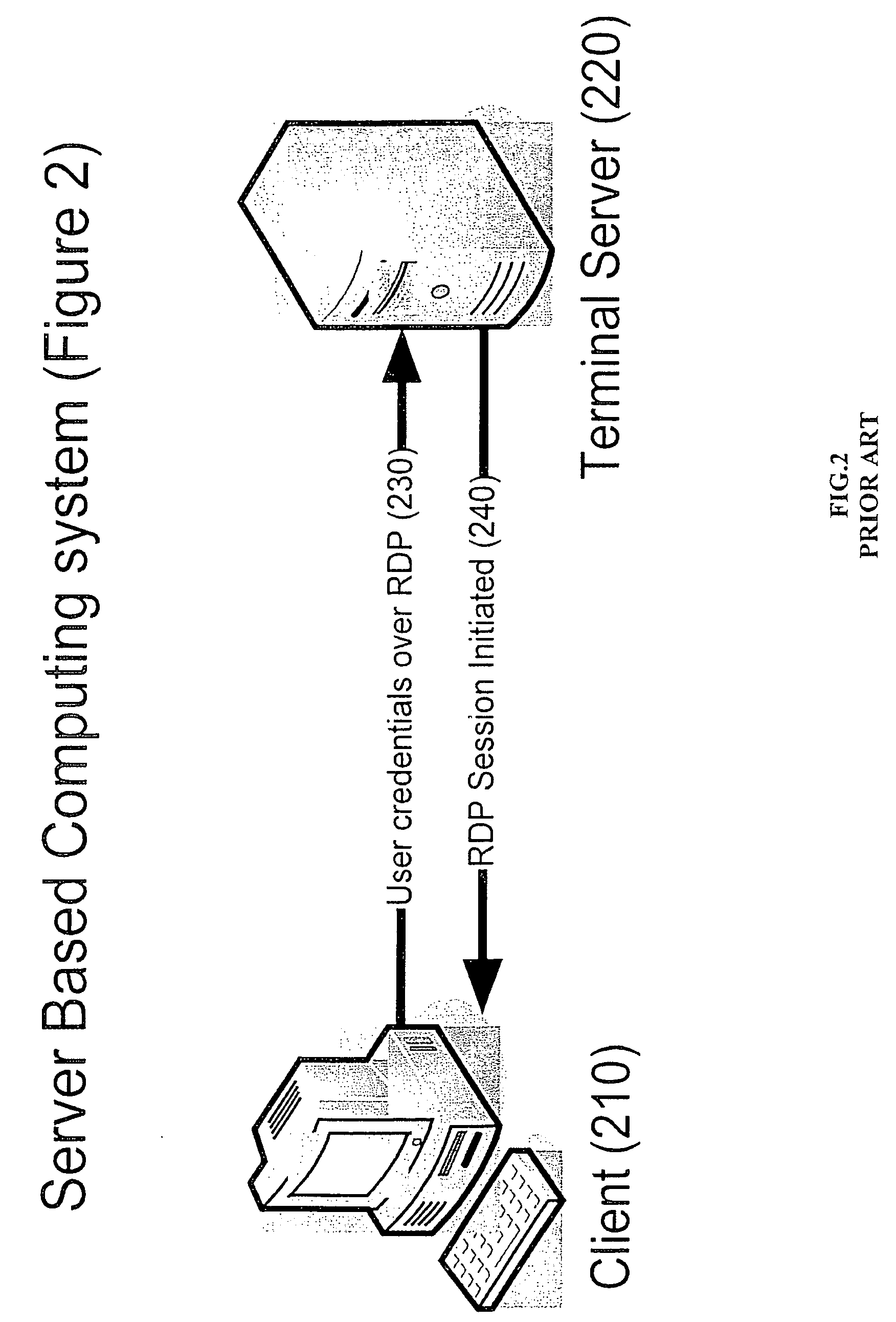Single sign-on to remote server sessions using the credentials of the local client
a client and server technology, applied in the field of clientserver computer networks using a remote presentation protocol, can solve the problems of potentially significant limitations, inconvenience for users, and inconvenient user even greater degree, and achieve the effect of extending the connection
- Summary
- Abstract
- Description
- Claims
- Application Information
AI Technical Summary
Benefits of technology
Problems solved by technology
Method used
Image
Examples
Embodiment Construction
[0034] The present invention is of a system and method of performing single sign-on to a Microsoft Terminal Server so that a user need not reenter authentication information, such as username, password and domain. Instead a ticket representing credential information of the user on the client node is used to automatically sign on to the Terminal Server and launch applications on the Terminal Server in the same security context as that of the client node.
[0035] The principles and operation of a system and method of single sign-on, according to the present invention, may be better understood with reference to the drawings and the accompanying description.
[0036] Before explaining embodiments of the invention in detail, it is to be understood that the invention is not limited in its application to the details of design and the arrangement of the components set forth in the following description or illustrated in the drawings. The invention is capable of other embodiments or of being pr...
PUM
 Login to View More
Login to View More Abstract
Description
Claims
Application Information
 Login to View More
Login to View More - R&D
- Intellectual Property
- Life Sciences
- Materials
- Tech Scout
- Unparalleled Data Quality
- Higher Quality Content
- 60% Fewer Hallucinations
Browse by: Latest US Patents, China's latest patents, Technical Efficacy Thesaurus, Application Domain, Technology Topic, Popular Technical Reports.
© 2025 PatSnap. All rights reserved.Legal|Privacy policy|Modern Slavery Act Transparency Statement|Sitemap|About US| Contact US: help@patsnap.com



